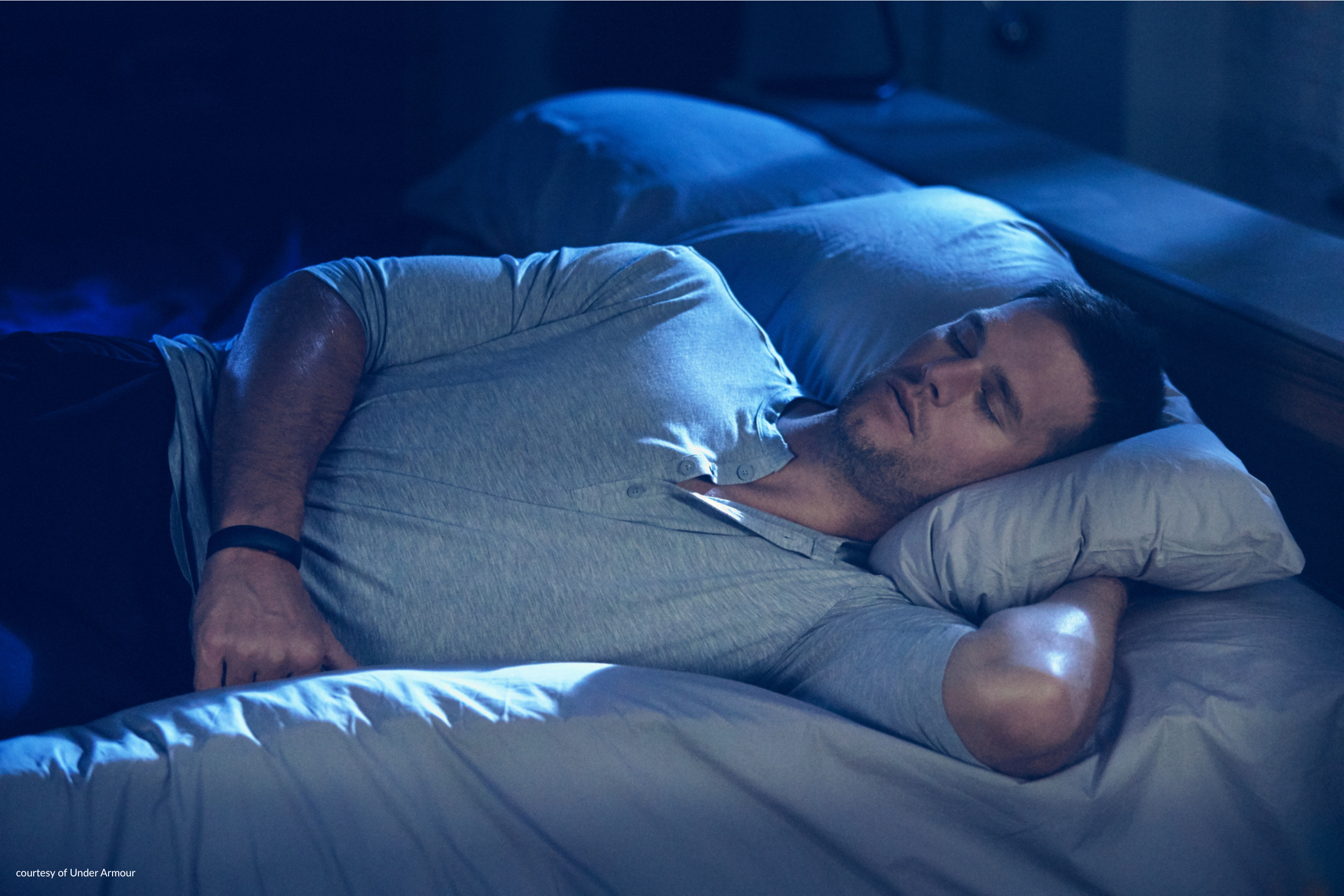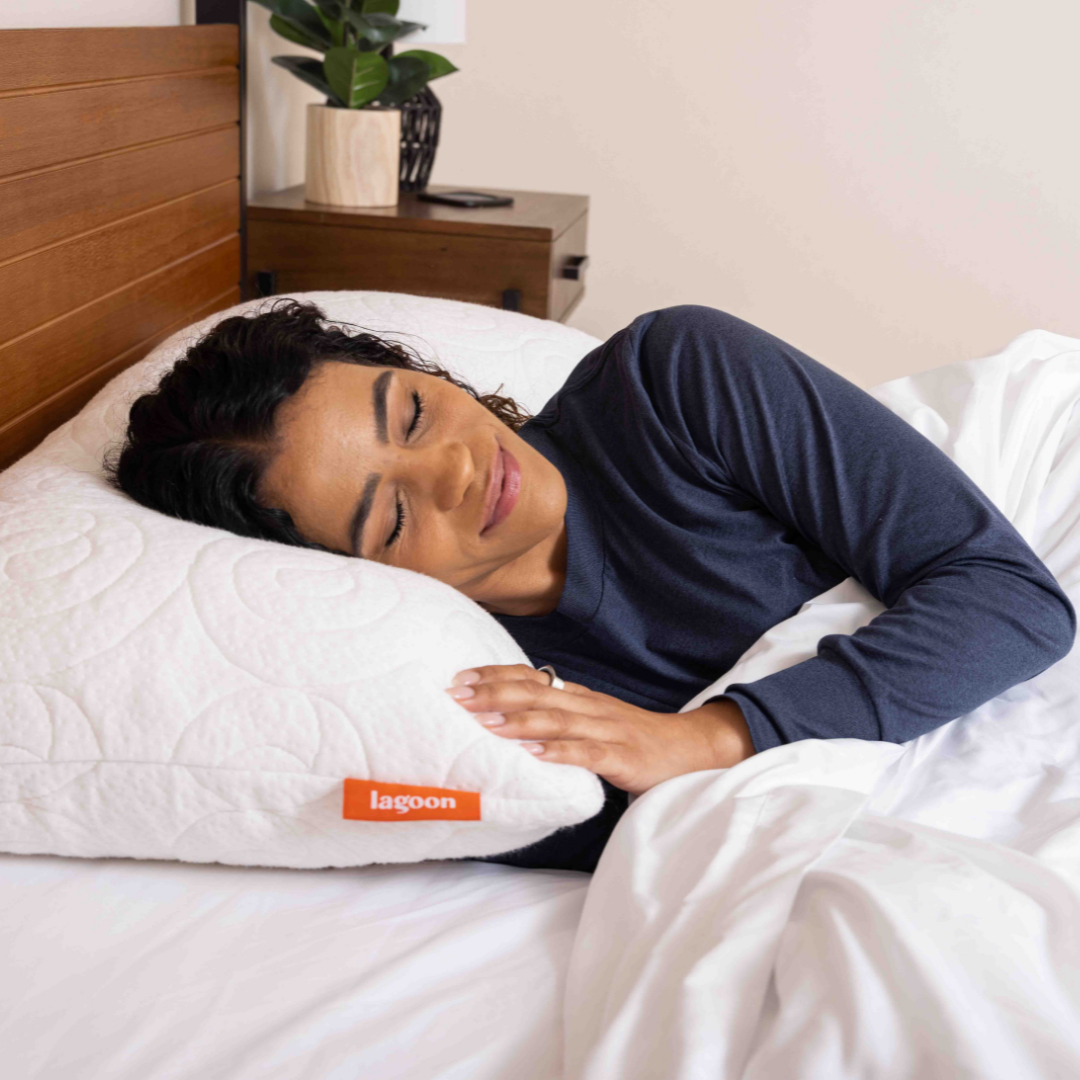With the stresses of daily life, including training, work and travel, achieving your most restful sleep can often be a challenge. We’ll we’ve got a new secret weapon for you to unleash to help you get that deep, quality sleep you’ve been desiring… Pink Noise.
What is pink noise?
It's a type of sound that contains all frequencies that humans can hear, but with equal energy per octave. In other words, it's like white noise, but with a deeper, more soothing tone. Pink noise is often compared to the sound of a waterfall, or rustling leaves, and has been shown to have a calming effect on the mind and body.
And you’re telling me that pink noise is better than white noise?
While white noise can be helpful for masking external sounds, it doesn't necessarily promote relaxation or deeper sleep. In fact, some studies have shown that white noise can actually increase heart rate and cortisol levels, which can lead to a more restless night's sleep.
On the other hand, pink noise has been shown to improve sleep quality, increase deep sleep, and enhance memory consolidation. In a study published in Frontiers in Human Neuroscience, participants who listened to pink noise during sleep experienced a 23% improvement in deep sleep compared to those who didn't listen to any noise at all.
Don't just take our word for it. Dr. Richard Shane, a sleep expert and founder of Sleep Easily, explains that "pink noise creates a more relaxing, calming sound that doesn't spike and arouse the brain like white noise does."
How might this improve your training?
With sleep being such a crucial component of athletic performance and recovery, it's worth giving pink noise a try. Especially if you’ve experienced struggling to fall asleep before a big race or recover from a tough training session, try playing some pink noise in the background. It might just be the key to sleeping like a champ.
Digging into Pink Noise’s effect on sleep cycles
During sleep, our brains go through several cycles of different stages, each with their own unique characteristics and benefits. These stages include non-REM sleep (which is further broken down into three stages) and REM sleep.
- Non-REM Stage 1: This is the stage when you're just starting to fall asleep and your brain is transitioning from wakefulness to sleep. During this stage, pink noise can help to soothe the mind and promote relaxation, making it easier to fall asleep.
- Non-REM Stage 2: This is the stage when your body temperature drops and your heart rate slows down. Pink noise during this stage can help to maintain a state of relaxation and prevent any external noises from disrupting your sleep.
- Non-REM Stage 3: This is the stage when your body repairs and regenerates tissue, and when growth hormone is released. Pink noise during this stage can help to promote deeper sleep and enhance the body's natural recovery processes.
- REM Sleep: This is the stage when you're dreaming and when the brain is most active. While pink noise may not be as beneficial during this stage as it is during non-REM sleep, it can still be helpful for masking external noises and preventing disturbances.
But the benefits of pink noise during sleep aren't just physical. Studies have also shown that it can have a positive impact on mental health and cognitive function. In a study published in the Journal of Sound and Vibration, participants who listened to pink noise during a memory test performed better than those who didn't listen to any noise at all.
Then how come all I hear about is ASMR?
If you're not already familiar with Autonomous Sensory Meridian Response (ASMR), you might be surprised to learn that it's become an internet sensation in recent years. ASMR refers to a tingling sensation that some people experience in response to certain triggers, such as soft whispers, gentle tapping, or even the sound of someone chewing.
While not everyone experiences ASMR, those who do often find it incredibly relaxing and calming. In fact, many people use ASMR videos as a way to unwind and de-stress after a long day.
So what does this have to do with pink noise? Well, some people believe that the soothing sounds of pink noise can also trigger ASMR in some individuals. While there's not yet a lot of research on the subject, anecdotal evidence suggests that pink noise can be a helpful tool for those who experience ASMR. But even if you don't experience ASMR, the calming effects of pink noise can still be beneficial for promoting relaxation and reducing stress. And with so many sources of pink noise available, it's easy to incorporate it into your bedtime routine.
Incorporating Pink Noise into your sleep routine
One option is to use a dedicated pink noise machine, which is designed specifically to generate pink noise. Many of these machines allow you to adjust the volume and tone to find the perfect sound for your needs.
Another option is to use a smartphone app or online source to generate pink noise. There are plenty of free and paid apps available, but my recommendation, if you use Spotify, is to just find a pink noise playlist.
In conclusion, if you're looking to improve your sleep quality and recovery, pink noise may be a helpful tool to add to your arsenal. Especially if you’re an athlete and really want to get the most out of your recovery time, its soothing sounds can promote relaxation and calmness, while also enhancing physical and mental recovery during different stages of sleep. The good news is, that it’s now easier than ever to incorporate this sound into your daily routine.
OWN YOUR REST.







